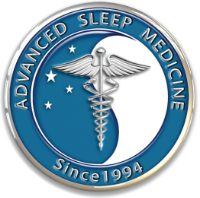
If you’ve ever pulled an all-nighter, you probably know what it feels like to have an overwhelming, almost compulsive desire to sleep the next day. But what if that feeling might strike you any day, whether you’d rested the night before or not? That’s what pretty much what narcolepsy is.
Narcolepsy: The Scientific Defintion
Narcolepsy is a type of neurological disorder that affects how the brain monitors waking and sleeping cycles. The condition is particularly associated with abnormalities in REM sleep cycles. Whereas most people begin REM sleep about an hour and a half after falling sleep, those suffering with narcolepsy may enter the REM phase immediately or even during the day.
Scientists are not entirely sure what causes this sleep disorder, but some believe that it is linked to a deficiency of the neurotransmitter hypocretin, which helps regulate and maintain wakefulness. Lack of hypocretin can be the result of a genetic or autoimmune disorder.
Narcolepsy Symptoms
The main characteristic of narcolepsy is the irregular—and spontaneous—sleep schedule. People with the disorder may have trouble sleeping soundly at night, only to experience uncontrollable bouts of drowsiness during typical waking hours. Narcolepsy doesn’t actually cause a net increase in the amount of hours spent sleeping, but rather distributes those hours irregularly and involuntarily.
The most common symptom of narcolepsy is EDS, Excessive Daytime Sleepiness, which is closely related to fatigue. EDS is a sensation of persistent drowsiness that results in impaired concentration and lack of energy. It can be punctuated by periods of “microsleep”, in which individuals may drift off for a short time without realizing at, and maybe without even interrupting their current task, such as driving or typing.
Another fairly common effect of narcolepsy is cataplexy, or sudden loss of muscle control. Severity can range from a drooping of the eyelids to complete loss of bodily control. Other symptoms are sleep paralysis (incapacity to move while falling asleep), hallucinations, and rapid weight gain.
Diagnosis and Treatment
Narcolepsy is tricky to diagnose because all of its symptoms can also proceed from other disorders. Identifying it requires extensive self-reported medical history and at least two sleep tests, a polysomnogram (PSG) and a multiple sleep latency test (MSLT). The PSG is the same test that is used to diagnose sleep apnea; it is an overnight examination that records factors like heart rate, breathing, and electrical impulses in the brain. An MSLT is administered during the day and helps determine the subject’s daytime drowsiness.
Narcolepsy is incurable, but in many cases symptoms can be alleviated with medications and lifestyle changes. Doctors may prescribe stimulants, anti-depressants, or a strong sedative at nighttime to improve wakefulness during the day and improve sleep quality at night. It is also advisable for people with narcolepsy to take certain behavioral measures, such as following a strict sleep timetable, which may include scheduled naps during the day, seeking counseling, and avoiding caffeine, alcohol, and large meals.
Resources: Wake Up to Sleep, National Institute of Neurological Disorders and Stroke, WebMD, National Sleep Foundation
Photo credit: Timothy Krause



